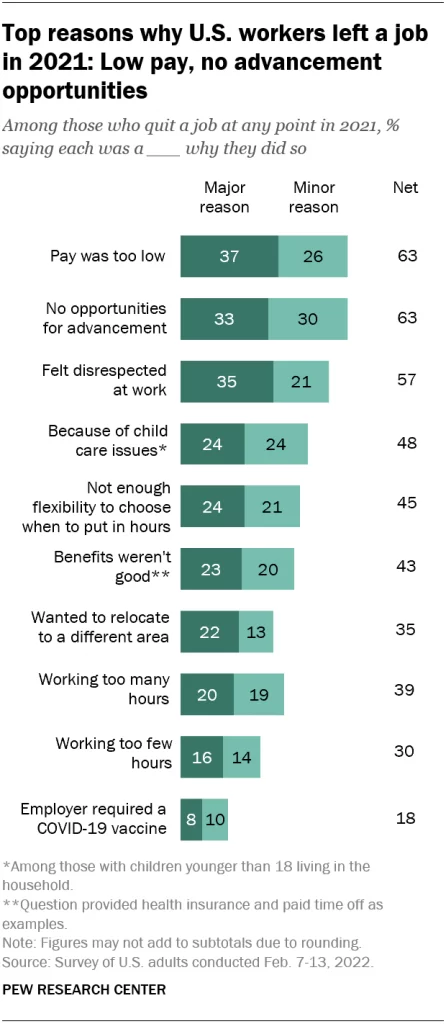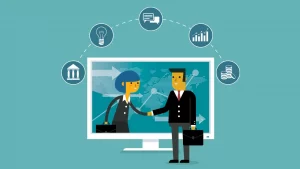“The Great Resignation” – Coming to an Organization Near You!
Samantha Badr
I’m sure you’ve heard at least one person say, “nobody wants to work these days”. Is it that no one wants to work or is it that workers are tired of being overworked and underpaid? Employees want more than the bare minimum. Companies that are experiencing turnover are most likely not allocating resources to employee retention efforts.
To further clarify, the nation’s quit rate reached a 20-year high last November. About 4.3 million employees willingly left their jobs – driven in part by what’s come to be known as, the “Great Resignation”.
The chart below shows the top reasons workers left their jobs in 2021.

According to the survey conducted in February by Pew Research Center, the top three reasons Americans quit their jobs last year were due to low pay, a lack of opportunities for advancement, and feeling disrespected at work. Let that marinate a little.
The “Great Resignation” signifies standing up for what you believe in and doing what’s best for you. If you approach work with exhaustion, burnout, or dread, then I think it’s time to move on. It’s not just about the compensation either. Lack of opportunities for advancement is also a major reason employees quit their jobs. It seems that a lot of employers are not providing the necessary tools to develop their employees. Let’s not disregard that the chart also shows employees feel disrespected at work. Really? I thought we were adults. Is micromanaging still a thing? The fact that millions of Americans made the scary choice to leave their jobs during a pandemic just shows that changes need to happen, and they needed to happen yesterday.
Oh, forgot to mention that I kind of did something recently. I quit my job. But why Samantha? Isn’t this what you wanted? Welllll, about that. I won’t bore you with the details, but it wasn’t the easiest decision to make. I wish I could say that I quit my job to pursue my dream of becoming a standup comedian, but it was a little deeper than that.
The chart above perfectly describes some of the reasons I chose to part ways with my old job. For a VERY BRIEF second, I thought I made an impulsive and crazy decision. But then I remembered that I did what felt right in my heart, and that’s something to never regret. And don’t forget folks – you are totally replaceable at work. You’re not replaceable at home. Home is your real life. Keep that perspective, always.
Looks like I’m not the only one quitting their job. Looks like other people are doing it too. I hope that this is the catalyst for changes in office culture. We spend the majority of our lives working, so why spend that time being miserable? I have made it my personal mission to spend my career turning the HR world upside down. These systems are old. They’re outdated. They need to be let go. Toxic work environments are not the norm. If you aren’t feeling empowered at work, then do yourself a favor and get out. But please, don’t throw a brick through your boss’s window – an email would be just fine.



